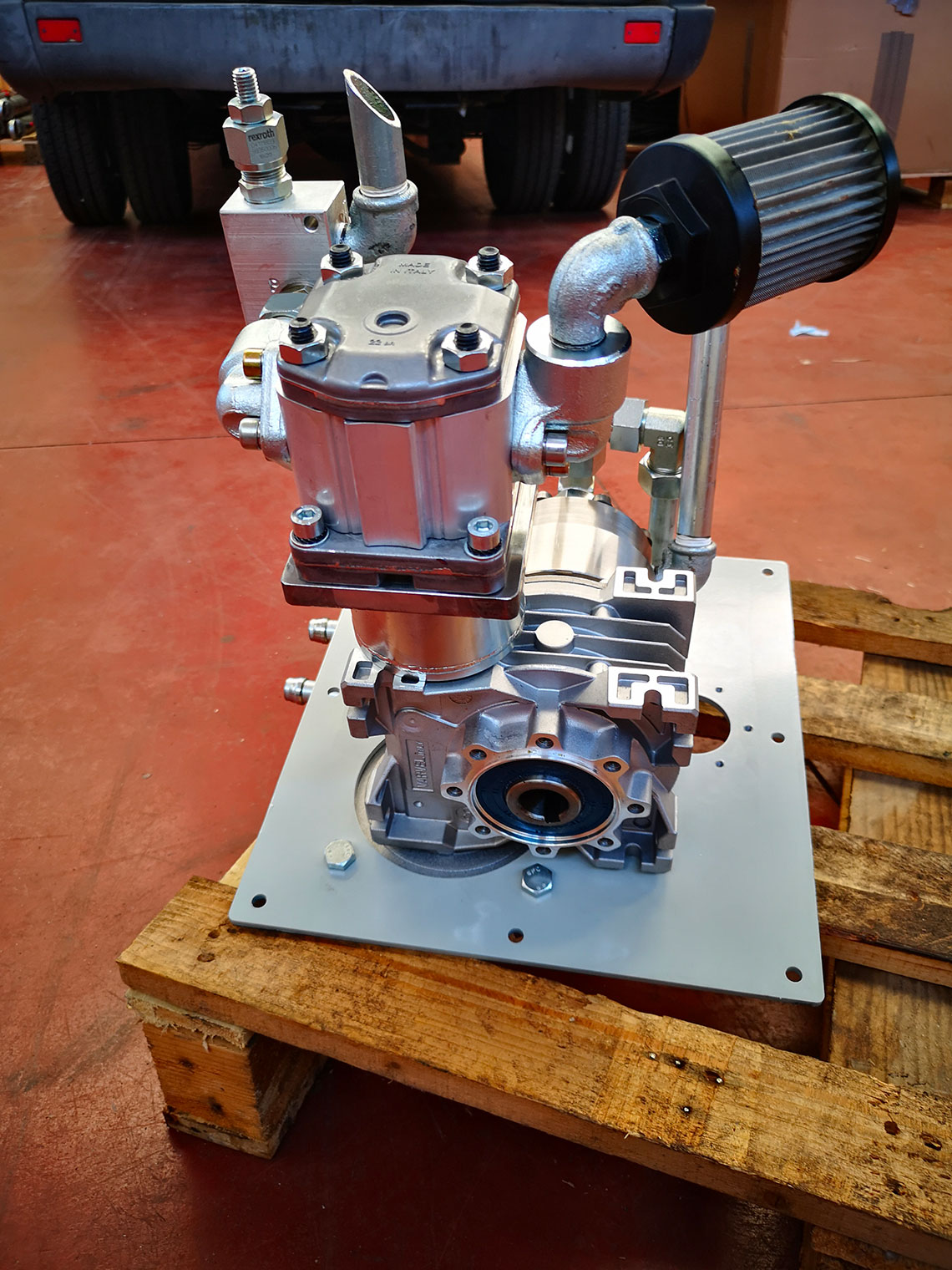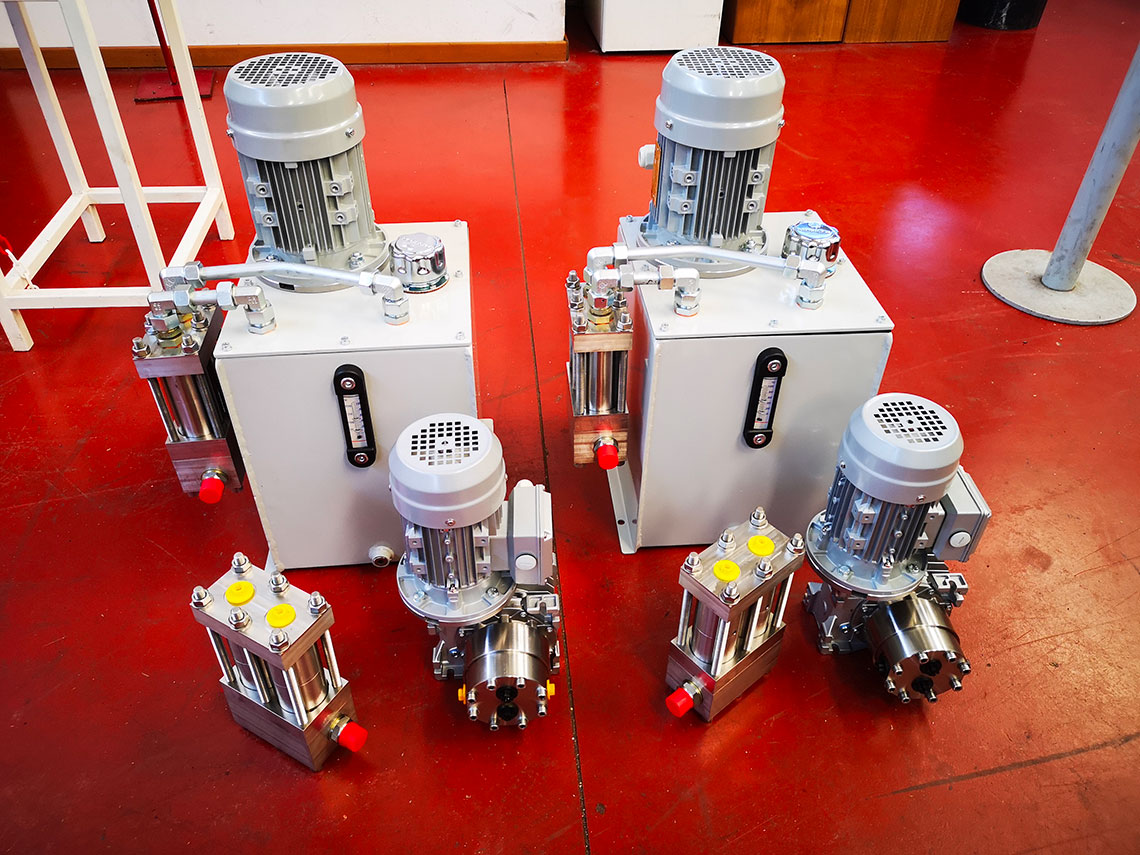Italian National Agency for New Technologies, Energy and Sustainable Economic Development

Water: From ENEA and SEKO new technologies for more efficient desalination plants
ENEA and the Italian company SEKO have developed an innovative high pressure pump for reverse osmosis water desalination plants with integrated energy recovery device.
This low-cost prototype, created thanks to a POC loan[1], it’s easy to develop at industrial scale and it’s targeted to small communities, islands and SMEs. The technology, which will be further developed and tested at the partner company's Rieti plant, thanks to its easy scalability can be offered in the different sizes required by the market.
“Currently our system is aligned with market standards, with an energy consumption per cubic meter of purified water that varies from 2.5 to 4.5 kWh/m3. We believe a future implementation could further reduce its energy consumption. But the greatest advantage offered by our technology is employing widely used, low-cost components that can also be integrated into small and medium-sized systems (50-600 litres/hour), unlike those available on the market, which have medium-large dimensions (above 2,000 litres/h) and are very expensive", explained team members Daniele Pizzichini, Claudio Russo and Gian Paolo Leone at the ENEA Bioproducts and Bioprocesses Laboratory of the Biotechnology and Agroindustry Division, in collaboration with Giuseppe Corallo and Aldo Franchi, the inventors of the patented system.
Reverse osmosis is currently the process for the purification of sea water most utilized worlwide, capable of removing the main ionic components by applying pressure to the water and pushing it onto a semi-permeable membrane, which retains the solute on the pressurized side of the membrane, producing a concentrated fraction (retentate), while the water desalinated and cleaned from impurities flows to the other side of the membrane. This process requires a lot of energy and it is accomplished using high-pressure pumps to push the solution through the membrane.
“90% of the total energy expenditure of these processes is attributable to the pumping systems and the majority of the energy supplied to the fluid (in terms of pressure and flow rate) remains in the retentate, i.e. in the process waste. Hence the need to integrate reverse osmosis desalination plants with devices like the ENEA-SEKO one, capable of recovering energy from the retentate, to reuse it in the same process with consequent savings on energy costs[2]", pointed out the researcher team. “The combination of low costs, efficiency, easy scalability and duration of operation will make it possible to satisfy the demand of new users, with a view to environmental sustainability and an efficient use of energy and water” they said.
“Over the last 25 years, SEKO has become a world leader in a strategic sector for the future of our planet like water treatment. Desalination and the related energy savings are crucial to our company and can open up significant market developments. This is why we were immediately enthusiastic about supporting ENEA in this innovative project, which fully embraces the company's mission, which has always aimed at exploring new growth prospects; this collaboration allows us to share ENEA expertise and our technical-commercial experience in this sector", concluded Maurizio J. Bruno, Technical Marketing Manager of SEKO.
Fresh water accounts for approximately 2.5% of Earth’s water, mostly locked up in glaciers, polar ice caps and groundwater. Of this fraction, only 0.008% is accessible. Population growth, agricultural intensification and industrialization have aggravated the problem of water scarcity: a third of the world's population is currently facing severe water stress[3], and the percentage is projected to increase. One of the most promising solutions to avert water shortages is represented by desalination plants: there are almost 16 thousands[4] in the world - mostly in the Middle East and North Africa - and they produce around 95 million cubic meters of desalinated water per day for human use. Reverse osmosis (RO) technology holds sway, producing over 65 million cubic meters of drinking water per day, approximately 70% of the total volume of desalinated water globally.
For more information:
Notes
[1] ENEA "Proof of Concept" Program funds projects with companies, aimed at development and technological innovation for the market, based on research outcomes, with an "open innovation" approach
[2] The ENEA-SEKO system is capable of recovering return pressure from the osmosis retentate and use it to reduce the energy consumption associated with pumping the fluid at high pressure.
[3] We talk about water scarcity when water supplies drop below 1,000 cubic meters per person per year.
[4] The state of desalination and brine production: A global outlook


